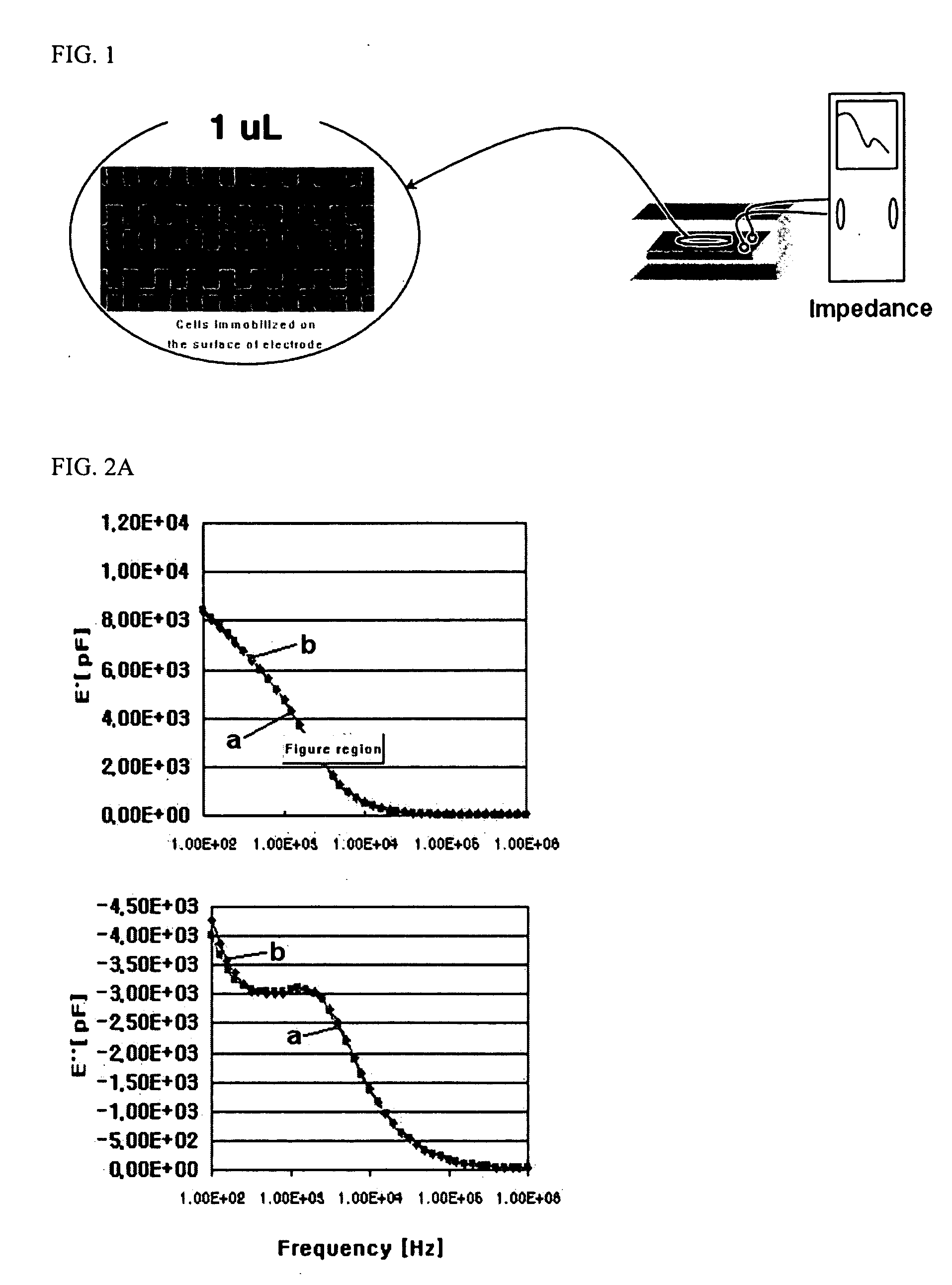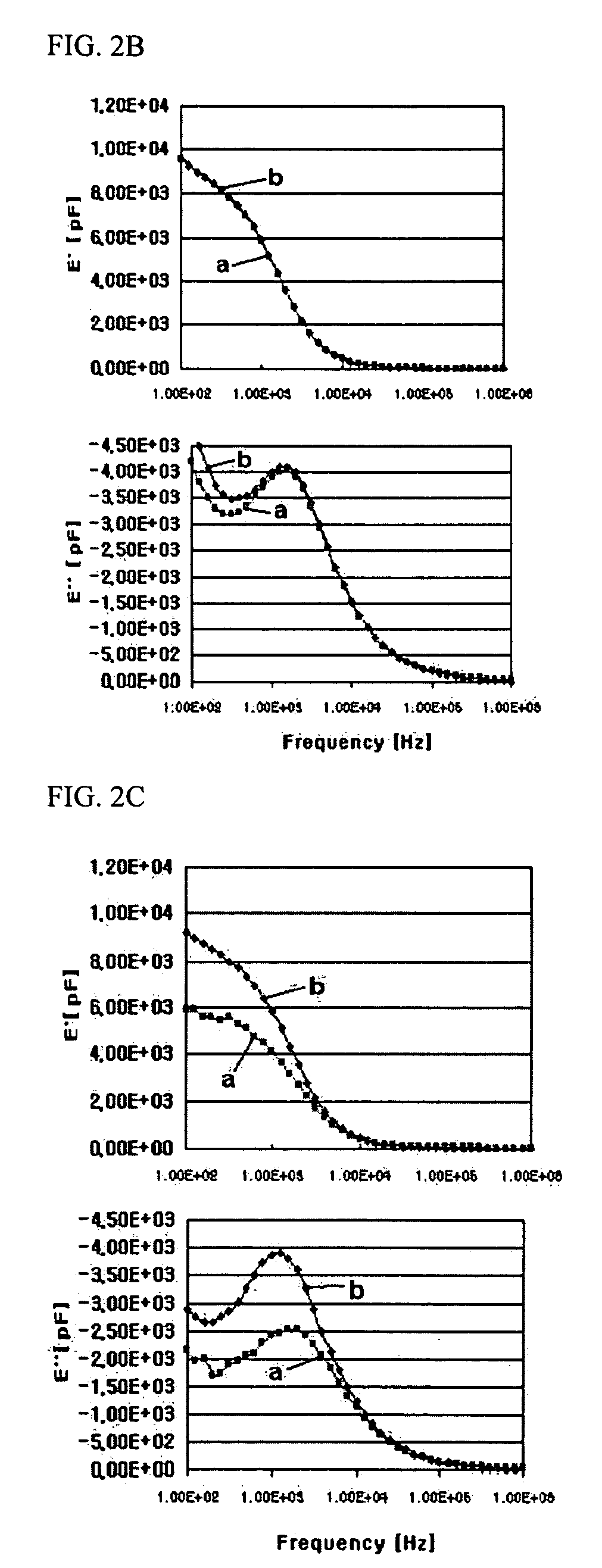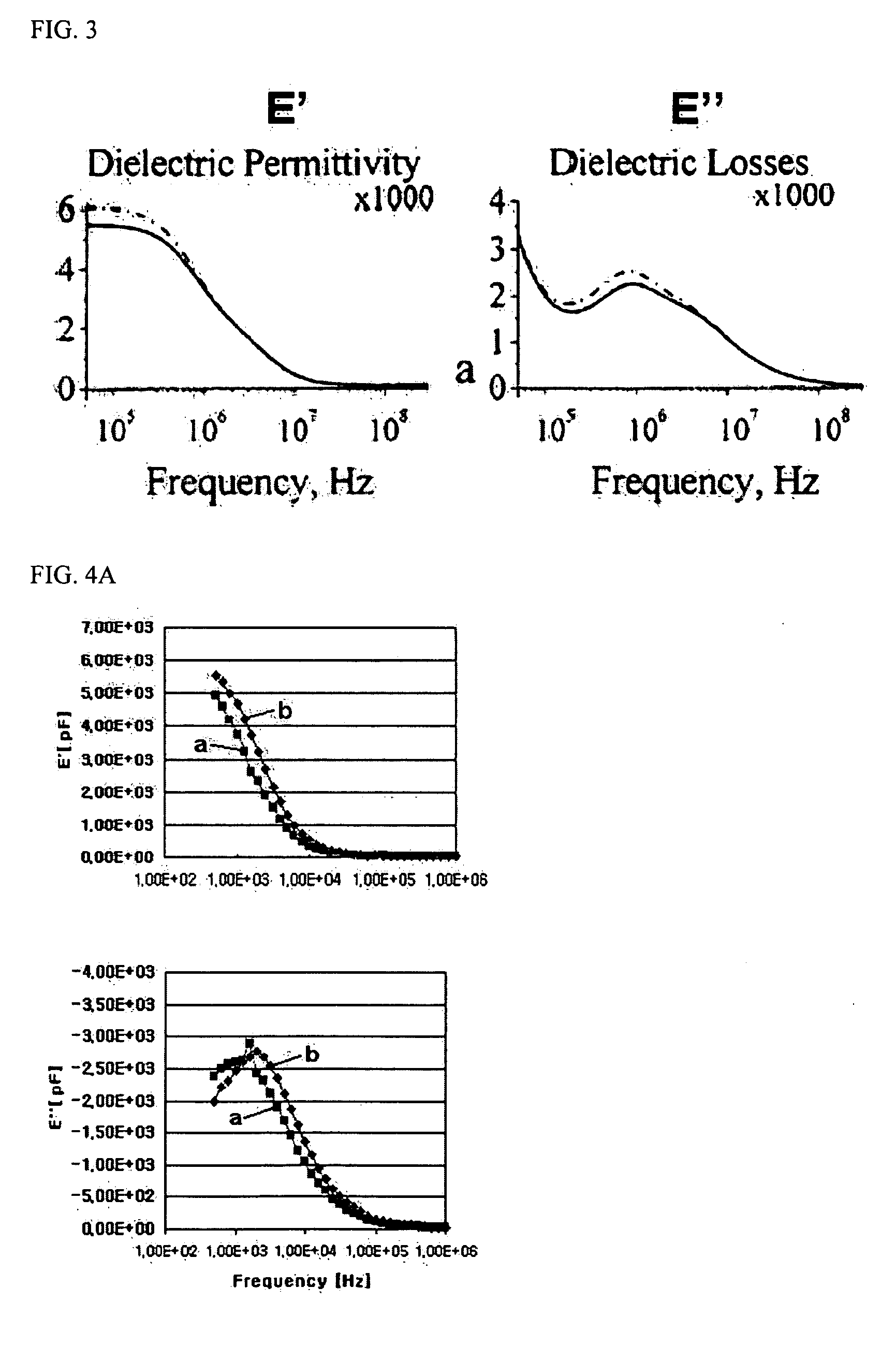Method and apparatus for electrically detecting an adverse effect of a toxic substance on procaryotic cells
- Summary
- Abstract
- Description
- Claims
- Application Information
AI Technical Summary
Benefits of technology
Problems solved by technology
Method used
Image
Examples
example 1
[0043] After a suspension of E. coli BL21 cells (1×1010 ells) was mixed with 1 ml of 1.5% agarose, 1 ul of the resulting mixture was laid and immobilized on the surface of a positive dielectrophoresis (“DEP”) 0 chip. Herein, the positive DEP chip had an interdigit electric structure in which an electrode gap is 15 μm, an electrode width is 15 μm, and an electrode pitch is 15 μm.
[0044] Subsequently, the cells-immobilized chip was soaked in 10 ml of 1 μM KCl solution and its initial dielectric permittivity (E′) and dielectric losses (E″) were measured. After that, 20% ethanol, which causes damage to proteins and cell membranes, was dissolved in 10 ml of 1 μM KCl solution, and the cells-immobilized chip was soaked therein for 5 minutes. The chip was then taken out of the 10 ml of 1 μM KCl solution and washed with 1 μM KCl solution three times. After soaking the chip in 10 ml of 1 μM KCl solution, dielectric permittivity (E′) and dielectric losses (E″) were measured. FIG. 1 shows an ap...
example 2
[0049] In order to examine whether the prokaryotic cells are sensitive only to a toxic substance, 20% sorbitol and 1× Luria Bertani (“LB”) broth were used as a non-toxic substance, and 5 μM carbonyl cyanide m-chloropheoxyhydrazone (“CCCP”), which is known to inhibit an electron transfer of a respiratory system, was used as a toxic substance. The experiment was conducted according to the same method as described in Example 1, except for using the above non-toxic substance and CCCP as the toxic substance instead of ethanol.
[0050] The results are shown in FIGS. 4A to 4C, wherein FIG. 4A is the result of treating with 20% sorbitol, FIG. 4B the result of treating with LB broth and FIG. 4C the result of treating with CCCP as a toxic substance. In FIGS. 4A to 4C, Line b represents an initial impedance value measured after the cell immobilization, and Line a denotes an impedance value measured after treating with a toxic substance or a non-toxic substance.
[0051] As illustrated in FIGS. 4A...
example 3
[0052] To verify the superiority of the electric signal-based detection method of the present invention, the exemplary method was compared with the existing colony counting and optical detection methods. The optical detection method was performed using a Baclight™ Bacterial Membrane Potential Kit (commercially available from by Molecular Probes Inc., U.S.A.) for verification.
[0053]FIG. 5A shows a bar graph showing the results of colony counting when the cells-immobilized chip is treated with 5 μM CCCP and a case of an untreated control. As can be seen from FIG. 5A, it was difficult to measure an adverse effect of a toxic substance via the colony counting method.
[0054]FIG. 5B shows a bar graph showing the results of optically measuring a change in cell membrane potentials when the cells-immobilized chip is treated with 5 μM CCCP and a case of an untreated control. As shown in FIG. 5B, it was found that since the reduction of cell membrane potential caused by CCCP is only 10% and do...
PUM
 Login to View More
Login to View More Abstract
Description
Claims
Application Information
 Login to View More
Login to View More - R&D
- Intellectual Property
- Life Sciences
- Materials
- Tech Scout
- Unparalleled Data Quality
- Higher Quality Content
- 60% Fewer Hallucinations
Browse by: Latest US Patents, China's latest patents, Technical Efficacy Thesaurus, Application Domain, Technology Topic, Popular Technical Reports.
© 2025 PatSnap. All rights reserved.Legal|Privacy policy|Modern Slavery Act Transparency Statement|Sitemap|About US| Contact US: help@patsnap.com



